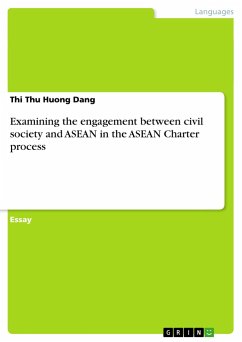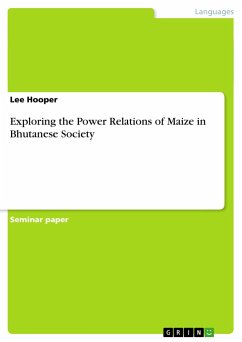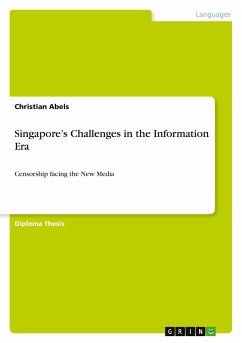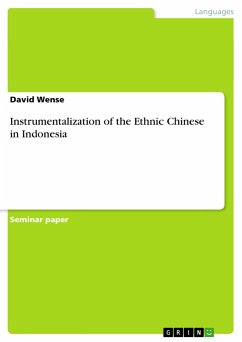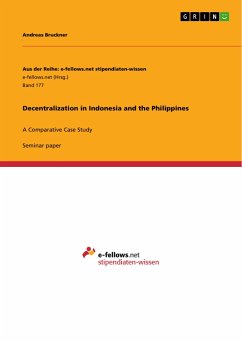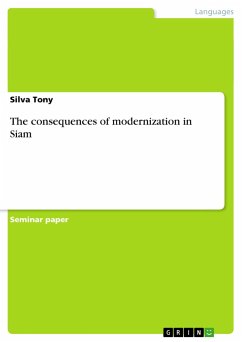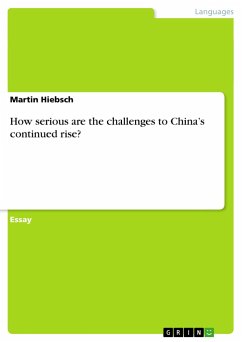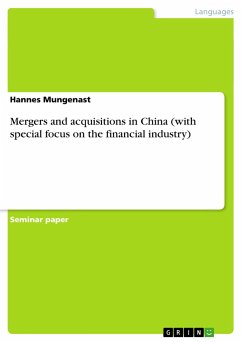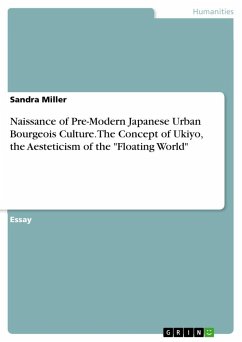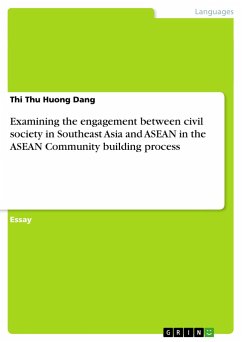
Examining the engagement between civil society in Southeast Asia and ASEAN in the ASEAN Community building process
Versandkostenfrei!
Versandfertig in 1-2 Wochen
17,95 €
inkl. MwSt.

PAYBACK Punkte
0 °P sammeln!
Essay from the year 2008 in the subject South Asian Studies, South-Eastern Asian Studies, grade: A-, LUISS University of Rome (LUISS University of Rome, Faculty of Social Science), language: English, abstract: The essay examines the engagement between civil society in Southeast Asia andASEAN in the ASEAN community building process. It argues that in spite of initial efforts inmutual accommodation, both sides have been divided from within, which slows theengagement and gives it more form than substance. The efforts by ASEAN so far will onlycreate a community of the governing elite, not a commun...
Essay from the year 2008 in the subject South Asian Studies, South-Eastern Asian Studies, grade: A-, LUISS University of Rome (LUISS University of Rome, Faculty of Social Science), language: English, abstract: The essay examines the engagement between civil society in Southeast Asia andASEAN in the ASEAN community building process. It argues that in spite of initial efforts inmutual accommodation, both sides have been divided from within, which slows theengagement and gives it more form than substance. The efforts by ASEAN so far will onlycreate a community of the governing elite, not a community of the people. Regionalcommunity building, just like nation-building, is very much a people-centered process. It isnot a simple top-down chain of command and control. If ASEAN wants to establish a realcommunity, it must change its modus operandi. It must be much more than an exclusive clubfor the governing elite by giving more space as well as power to civil society in its agendasettingand decision-making. A community is much more a cognitive than material construction; it is somethingthat has to be believed in, sensed, and nurtured by the people. In Southeast Asia, theAssociation of Southeast Asian Nations (ASEAN) is building an ASEAN Community, whichis its most far-reaching project. Yet is it possible for a regional organisation that has beenwidely criticised by civil society for being remote to and detached from the people toestablish a community of caring and sharing societies by 2015 as its statements indicate? Andif yes, how?Meanwhile, civil society has an important role to play in community building. Yetcivil society in Southeast Asia is weak and fragmented. It has been excluded from ASEAN'sdecision-making process. Can civil society contribute to ASEAN community building? Andif yes, how?This essay tries to answer these questions by looking at the engagement between civilsociety in Southeast Asia and ASEAN in the ASEAN Community building process. It beginswith a summary of the ASEAN Community building process, which is followed by anexamination of the role of civil society in community building. The third section introducescivil society in Southeast Asia. And the fourth is about the engagement between civil societyand ASEAN prior to ASEAN community building. I divide this part into two periods: beforeand after the Asian financial crisis.



